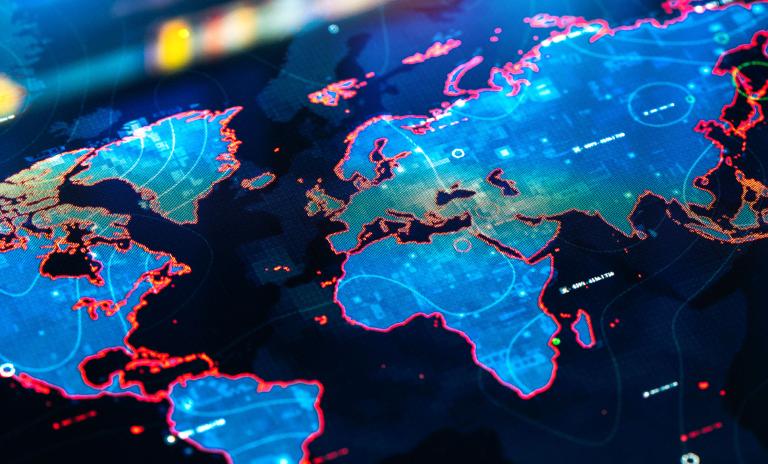Global South: Beyond BRICS
![{[downloads[language].preview]}](https://www.rolandberger.com/publications/publication_image/roland_berger_web_25_1005_default_cover_03_download_preview.jpg)
RBI Quarterly takes a closer look at the hurdles & opportunites for development of countries in global south.


By David Born
The Global South, a term representing developing economies, is evolving into a geopolitical force of economic and political significance, not least due to the expansion of BRICS to include five additional countries - Saudi Arabia, the UAE, Iran, Egypt and Ethiopia - amid growing interest of more countries to become future members. Our new RBI Quarterly asks: Can the Global South become the new driver of global growth? What hurdles are preventing the countries of the Global South from advancing? To what extent can the Global South capitalize on advantages that arise primarily from its abundance of resources?

Although not strictly geographical, the Global South represents developing countries in Asia, Africa, and Latin America, in contrast to the advanced economies in the Global North. Since the 1990s, the economies of the Global South have consistently outpaced the GDP growth of the Global North, at times exceeding it by more than threefold before the onset of COVID-19. Notably, contributions of Global South economies to global GDP rapidly expanded from 19% in 1990 to 42% in 2022.
However, the rapid ascent of the Global South can be divided into two distinct trajectories: East Asia and the rest of the Global South. By becoming the world’s workbench, the industrialization of East Asia led the development of the Global Souths’ rapid growth, mainly driven by its strong integration into regional value chains. The remaining countries engage in global value chains mainly by providing natural resources and commodities to the former. This pattern is clearly reflected in global trade, with 25% of global trade in goods being South-South while 21% is South-North. Moreover, 76% of trade in goods consist of manufactured goods in East Asia, while natural resources and commodities account for 77% in Africa and 54% in Latin America and the Caribbean.
As factor costs have increased in East Asia and multinational companies are diversifying their supply chains at an accelerated pace since COVID-19, progressively restructuring their suppliers across multiple locations, infrastructure investment is once again on the rise, shifting away from China to other locations. Propelled by robust growth in Latin America and the Caribbean, Foreign Direct Investments (FDI) towards the Global South rose by 4%, reaching USD 916 billion in 2022. Nevertheless, East Asia continues to dominate within the group, receiving a 60% share of total FDI inflows.
Despite the Global South experiencing strong economic growth in recent years, it has been unable to bridge the gap to the Global North. Conversely, the gap even increased, with Global North GDP per capita exceeded those from Global South economies by a factor of 3.2, up from a gap of 2.4 in 2000. Several factors such as the absence of strong institutions as well as deteriorating trade and financing conditions limit the Global South’s potential development.
Amongst all these issues, the macroeconomic stability of the Global South is particularly challenged by a rapid increase in public debt over the past decade, fueled by low interest rates. As of 2021, private creditors account for over 60% of the Global South’s public debt. Moreover, nations in the Global South are facing considerably higher risk premiums regarding financing costs compared to their Northern counterparts. Given the unprecedented interest rate hikes by major central banks in industrialized countries, interest rates in Asia have risen to 6.5% on average, to 7.7% in Latin America and the Caribbean, and even 11.6% in Africa.
To stabilize the struggling economies in the Global South, innovative financing solutions are essential. This includes finding new funding sources and promoting and implementing currency swaps. China has emerged as the new major financier of the Global South economies. Supported by the BRICS New Development Bank (NDB), a multilateral development bank established as an alternative to existing institutions such as the IMF and the World Bank, its formation suggests that Global South countries are trying to take their financial destiny into their own hands. Moreover, Global South economies extend their use of local currencies for inter-regional trade, raising concerns about de-dollarization.
Many countries in the Global South are endowed with abundant natural resources. Besides fossil fuels, minerals and agricultural products, some Global South countries are also dominating production in certain commodities that are required for the global green energy transition, such as lithium, nickel, cobalt, manganese, and graphite.
Some observers are already suggesting that the surge in demand for such energy transition commodities could trigger a new commodity supercycle. In recent years, mining companies have scaled down their investment in new mining capacities for various reasons. Meanwhile, developing a lithium mine typically requires 3 to 10 years, while copper, nickel, and other industrial metals necessitate 5 to 15 years for development. Therefore, the capital expenditure shortfall observed over the past years may translate into a supply shortfall of crucial commodities between 2025 and 2030.
Driven by the impending supercycle, resource-rich Global South countries are trying to capitalize on this growth momentum by developing downstream industries and promoting economic diversification. A critical question revolves around whether the energy transition enables developing and emerging nations to ascend the value chain and draw on higher-margin activities alongside the expansion of primary ore exports. Processed materials often command substantial price premiums over unrefined ores, which could enhance trade balances and reduce input costs for infrastructure and industrial projects, ultimately fostering local economic development.
In conclusion, the ongoing geopolitical transformations and the shift towards sustainable energy offer substantial prospects for numerous global south nations to elevate their standing in global value chains and uplift the living standards of their citizens. Nevertheless, these countries grapple with persistent and emerging challenges, including financial constraints in certain regions. Successfully surmounting these obstacles, bolstered by international collaboration, holds the key to a promising future for the global south.
We thank Yu Wang and Steffen Geering for their contributions to this article.
![{[downloads[language].preview]}](https://www.rolandberger.com/publications/publication_image/roland_berger_web_25_1005_default_cover_03_download_preview.jpg)
RBI Quarterly takes a closer look at the hurdles & opportunites for development of countries in global south.
Sign up for Roland Berger Email Updates to receive regular news and invitations related to international growth markets, including investment opportunities in various countries, directly in your inbox.